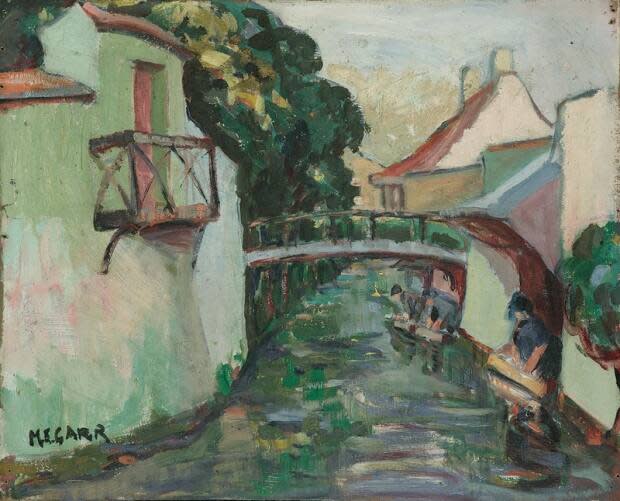New Emily Carr exhibit captures how the artist's style changed after studying in Europe
As a painter, Emily Carr is well known for her watercolour depictions of Indigenous life in the Pacific Northwest, but she was one of the first painters to introduce modernism and post-impressionism to the Canadian art scene in the early 1900s.
She developed these styles after studying in Paris for several months in 1911 and now, more than a century later, a new exhibit at the Royal B.C. Museum provides a glimpse into that time in her life.
Emily Carr: Fresh Seeing — French Modernism and the West Coast opened at the Victoria venue Oct. 22 and runs until January 24, 2021.
The exhibit includes 67 artworks by Carr and her compatriots in France and, according to co-curator Kathryn Bridge, is the largest assemblage of Carr's paintings from Paris to ever be displayed.
Bridge told CBC's All Points West that Carr went to Paris intending to learn about modern art and change her style. When she came back, it was apparent a "huge transformation" had taken place.

"She no longer looked at the scene in front of her for its realism, but looked at the scene in front of her for what it spoke to her, and what she felt, and painted that instead," said Bridge.
Carr had returned with a preference for post-impressionism, which puts broad emphasis on abstract qualities or symbolic content. Famous artists associated with the style include Paul Cézanne and Vincent Van Gogh.
Unfortunately for Carr, her new style was initially snubbed by the Canadian art community. She opened a studio in Vancouver when she returned from Europe but did not get the support from locals she had before.
"In general, it was not well received and it was quite difficult to her," said Bridge.

But Carr did not shift gears.
According to Bridge, she responded by saying she had a fresh way of seeing and couldn't go back — and she continued with her new style until she was eventually accepted for it.
A micro-exhibition curated from the Royal B.C. Museum's own collection is running alongside the new show. It features 22 smaller artworks ranging from sketches to small watercolours, as well as postcards, travel expense lists and one of Carr's hooked rugs.

Lou-ann Neel, acting head of Indigenous collections and repatriation, says the show is also complementary to the museum's permanent collection.
"After seeing Carr's paintings, visitors can head upstairs to the First Peoples Gallery to experience first-hand the Indigenous art that inspired her paintings," said Neel in a statement.
The museum is offering online programming during the exhibition, including a curator-led "exhibition highlights" video.
As part of ongoing COVID-19 health and hygiene protocols, all visitors will require timed tickets, which are available for advance purchase online.

